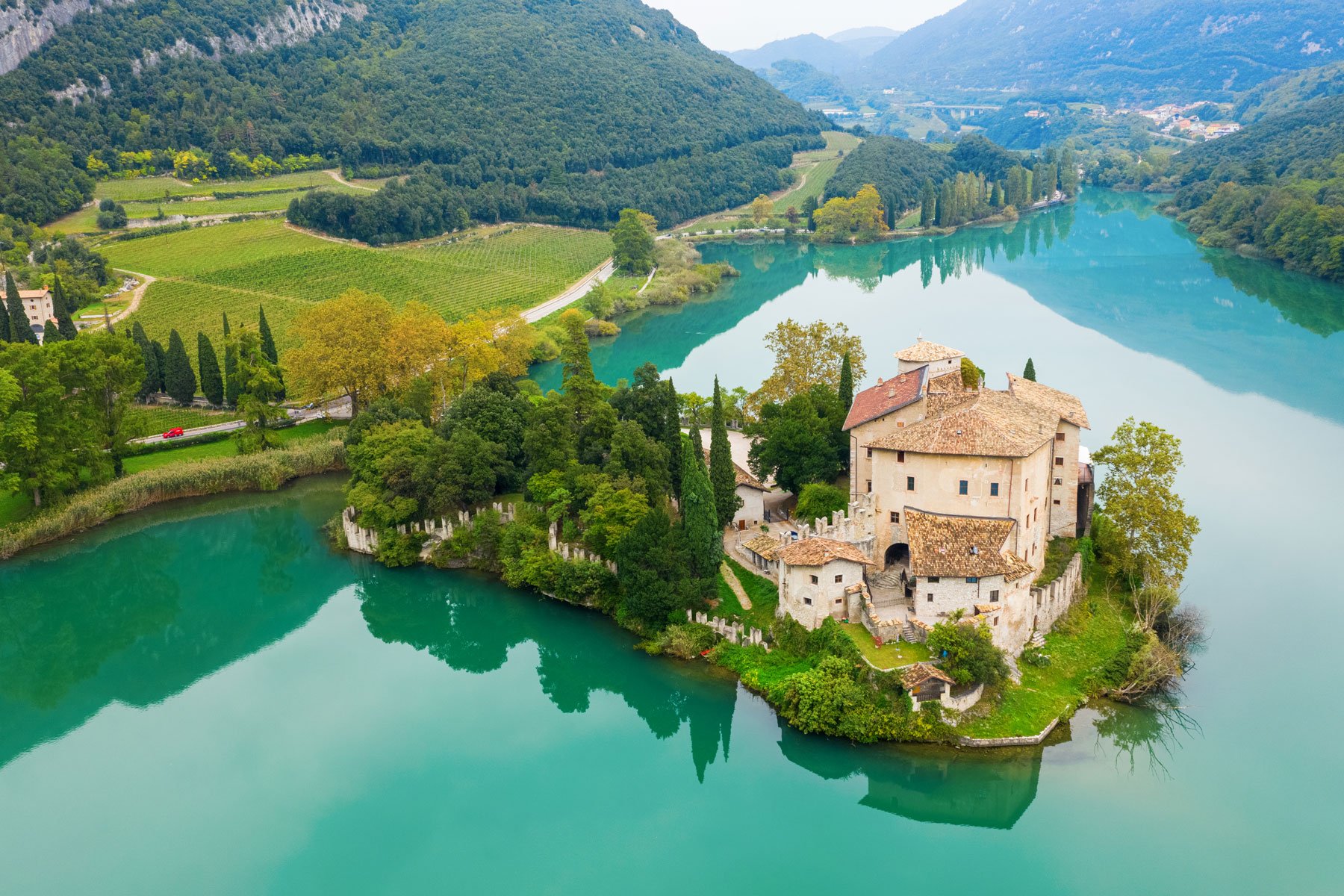CASTLE SITES
The Dolomites are home to many incredible architectural and cultural treasures, extraordinary villas, important castles and elegant stately homes.



-

Carrarese of Este Castle
The Castle that dominates the city of Este is made up of large maize towers and a mighty wall, about a kilometer long, which embraces the extreme southern offshoot of the Euganean Hills. This mighty monument testifies to the role of primary importance that the Este territory played in medieval times. he imposing bulk of the Carrara castle complex was indicative of its importance in times of war when it played a fundamental role in the defense strategy of the domains of the Paduan Signoria.
-

Malcesine Castle
One of the most beautiful castles in Veneto, the Scaliger castle of Malcesine is perched on the north-eastern shore of Lake Garda. Its construction by the Lombards seems to date back to the middle of the first millennium AD. It houses the curious Museum of Fishing, Lake Activities and "Venetian Galleys". The fortress also owes part of its fame to the German poet Goethe, who included drawings and descriptions of the castle in his book “Journey to Italy”.
-

Toblino Castle
Thanks to its strategic position, Castel Toblino played an important defensive role in the area in the past. However, the structure that we can admire today is the result of modernization works done in the sixteenth century, which were commissioned by the bishops of Trento, Cles and Madruzzo. In the third century, a small temple dedicated to the cult of the fairies was built on the site where the castle stands today. This is witnessed by an inscription on the portico’s wall of the castle that the archaeologist Paolo Orsi defines as "unique in its kind” in Roman epigraphy".
-

Thun Castle
Built in the mid-thirteenth century, the castle dominates the Val di Non from the top of a hill, which is white with apple-tree flowers in bloom in spring. For centuries the castle was the residence of the Thun family, one of the oldest and most powerful families of the Trentino nobility. What strikes you, as soon as you enter the building, is the perfect state of preservation of the furnishings, including the wonderful Bishop's Room, which is richly furnished and covered in stone pine. In the castle there are also art collections, period furniture, weapons, porcelains, carriages, and more; every detail helps create an atmosphere evocative of the comfortable life nobles had centuries ago.
-

Campo Castle
It is a monumental castle in the woods, on the edge of the Lomaso Plain. The building, which has belonged to the Rasini family of Milan since 1920, has an original artistic and architectural combination that includes medieval, romantic, and neo-Gothic styles. Castel Campo has artistic value and a lot to offer, as you will learn if you book a guided tour to visit the Castle. Since 2007, through its non-profit organization, Castel Campo has hosted cultural events, horticulture courses, and summer camps and it has given many people who deal with family illnesses and psychosocial difficulties the opportunity to take part in activities and feel better.
-

Caldes Castle
Built in the thirteenth century, this Gothic-style castle was, according to a legend, the place where the noble Olinda was imprisoned for the crime of falling in love with a minstrel. The castle was initially used, together with the overhanging Rocca di Samoclevo, to control the valley. In 1464, the manor was acquired by the Thun family. The last interventions, dating back to the sixteenth century, include the construction of a chapel dedicated to the Nativity of Mary, decorated with frescoes by the painter Elia Naurizio. Today, the building is part of the Buonconsiglio network of castles and is home to period furniture, works of art, and the stube del conte or Count’s Parlour, recently restored to its ancient splendour
-

Duino Castle
It rises above the Gulf of Trieste. It dates back to the fourteenth century and has always been the home of noble families. The castle has a sixteenth-century tower and a park.
-

Villalta Castle
One of the most fascinating castles in the region, the small fort of Villalta boasts centuries of history and it is set in a particularly beautiful landscape. It was first built between the 10th and the 11th century, but it was destroyed and rebuilt several times. In fact, it was often damaged during battles fought between contending armies that were seeking to conquer its strategically important position.
-

Spessa Castle
It stands among the vineyards of Collio in Capriva del Friuli. The estate also includes a park and its own vineyards.
